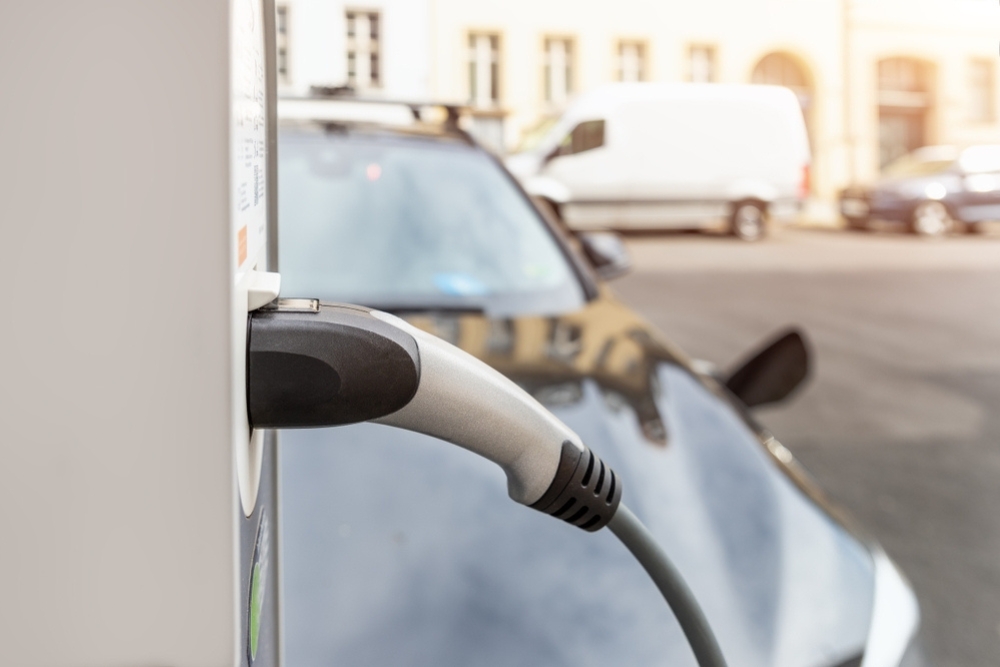Mobility trend predictions for 2025
By SG Fleet | 20 December 2024

The mobility landscape in the UK is changing rapidly. Several key trends are likely to alter the way businesses and individuals think about transportation, fleet leasing, and the broader automotive and vehicle industries. In many cases, they highlight a shift towards sustainability, technology, and flexibility – and could offer exciting opportunities for businesses to rethink their mobility strategies.
EVs and sustainable mobility will continue to rise.
EVs have become more and more common on UK roads, and over the next year, we can expect this rise to continue. The UK government has outlined ambitious targets to phase out new sales of petrol and diesel cars by 2030, which will push both businesses and consumers towards greener alternatives.
The adoption of EVs isn’t only about reducing emissions.
It’s also an excellent way to future-proof businesses against ever-stricter environmental regulations. Companies that integrate EVs into their fleets will contribute to sustainability and benefit from the incentives and lower running costs. EV infrastructure – most notably charging stations – is expanding, too, which makes it even easier for companies to adhere to the new vehicle trends.

The growth of Mobility-as-a-Service (MaaS).
MaaS is a burgeoning vehicle trend that lets users access various modes of transport (like e-bikes, public transport, and employee car schemes) through a single digital platform. It’s becoming a more integral part of the ways businesses manage employee transport. This vehicle trend gives employees a greater level of control over their commute to make it more seamless and enjoyable, be it through shared vehicles or private cars.
Micromobility could take centre stage in urban areas.
Micromobility is all about small, lightweight vehicles designed for short-distance travel and usually powered by electricity. Think e-bikes, e-scooters, and mopeds. They’re a sustainable and convenient alternative to cars, especially in built-up areas.
It’s a vehicle trend that’s gaining traction in the UK as a practical way to manage urban congestion and lower carbon emissions. Government initiatives are playing a role in this, too, by supporting e-scooter trials and expanding city cycling networks.
Businesses are also capitalising on micromobility’s potential.
Service businesses are starting to explore micromobility as a tool for last-mile delivery. It’s a shift that supports environmental goals and aligns with changing consumer preferences, as many people see micromobility as a way to travel with convenience and cost-efficiency. Challenges still remain, but in general, the future of micromobility in the UK looks promising in 2025.
Will autonomous vehicles (AVs) start to become mainstream?
This is a big question, and there’s no doubt that AVs are still very much in their infancy. That said, significant strides are a realistic prediction for 2025. The potential benefits have been well discussed. In theory, AVs could allow businesses to redeploy divers to higher-skilled roles while improving safety and greater levels of efficiency.
For logistics firms, the ability to integrate self-driving commercial vehicles could revolutionise their supply chain operations, reducing delivery times and operational expenses.
The question is: are people ready for it?
Research shows that passengers and drivers, in many instances, are reluctant to fully hand over the reins to automated systems. Concerns around safety and ethical decision-making have been raised about this automotive trend. However, as technology continues to advance, it’s likely that more and more driver support technology will be integrated into personal and commercial vehicles.
Safety and in-car technology are coming to the fore.
Vehicle trends for 2025 point towards a greater emphasis on safety and in-car technology. The development of advanced driver assistance systems (ADAS) will likely continue, offering features like lane-keeping assist, automatic emergency braking, and adaptive cruise control. These features not only improve safety but also help reduce insurance costs for businesses that operate fleets.
In-car technology will also evolve.
Vehicles are likely to offer more integrated digital services. From entertainment options to advanced navigation systems, the connected car will play an even bigger role in how drivers and fleet managers interact with vehicles. These tech upgrades could become a key selling point for businesses looking to attract and retain employees, as well as improve satisfaction among drivers.
Data analytics could play a larger role in fleet operations.
With more vehicles connected to digital platforms, fleet managers will have access to real-time data on vehicle performance, fuel efficiency, driver behaviour, and maintenance needs. This wealth of data can be used to make more informed decisions and optimise fleet operations.
For businesses, data-driven fleet management can save money and improve efficiency and service delivery. The ability to track and analyse every aspect of fleet performance ensures that businesses can maximise their investment and make proactive decisions about vehicle maintenance and replacement.

Looking for a partner to harness new trends in mobility?
At SG Fleet, we’re at the forefront of the changing mobility landscape. With a focus on fleet leasing, fleet management, and cutting-edge mobility solutions, we’re equipped to help your business navigate the automotive trends shaping the future.
Whether you’re looking to transition to electric vehicles or integrate a MaaS-friendly employee car scheme, we’ve got the expertise to guide you. Get in touch with our team today to find out more.
FAQs
Will micromobility affect commuting costs?
Yes, and it could see them decrease. Options like e-scooters and e-bikes are often cheaper than public transport, for instance.
Will traditional cars become obsolete?
That’s unlikely to happen in the near future. While EVs, MaaS, and micromobility will grow, petrol and diesel vehicles are still likely to be in use.
What infrastructure changes are needed to manage these trends?
More EV charging points, improved bike lanes, and dedicated spaces for micromobility trends are all good starting points.
How can small businesses benefit from MaaS?
MaaS can reduce transport costs by offering more flexible travel options with greater opportunities for control.
Further Reading
- Are EVs Viable in Rural Areas?
- How Can We Adapt Fleet Management to UK Mobility Trends?


.png)


.png)
.png)
.png)
